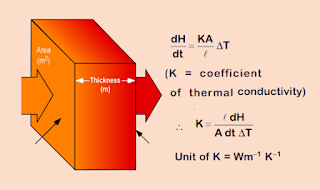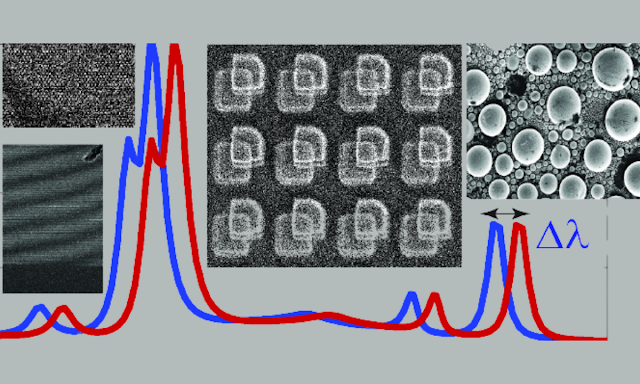Understanding Thermal Conductivity Units | A Comprehensive Guide
Thermal conductivity, a critical asset of heat transfer and strength-efficient technologies, holds a paramount role in diverse applications. This intrinsic feature defines a material's talent in carrying out heat, influencing the effectiveness of heat exchange systems and electricity optimization throughout industries. Engineers, scientists, and curious minds are compelled to realise thermal conductivity units, as they serve as a compass to navigate the intricacies of heat dynamics.
 |
| Thermal Conductivity Units |
Introduction:
In our present day world, the quest for electricity performance and most fulfilling heat management spans across industries. At the core of this pursuit lies the fundamental concept of thermal conductivity. Thermal conductivity is a degree of a fabric's ability to conduct heat through its internal shape. When two objects at exceptional temperatures come into contact, heat flows from the hotter item to the cooler one. The price at which this warmness transfer takes region is decided by way of the substances concerned and their thermal conductivity.
The significance of thermal conductivity cannot be overstated. It affects how we design heat exchange structures, optimize power intake, and decorate overall performance in various fields. From electronics and production to engineering and transportation, thermal conductivity is pivotal in shaping technology and using innovation.
What is Thermal Conductivity?
Thermal conductivity refers to the belongings of a material that determines its capacity to conduct heat. It measures how properly a substance can transfer heat through its inner shape. The higher the thermal conductivity, the extra efficaciously heat is conducted by the material. This assets is important in numerous applications, which include electronics, production, and engineering.
Thermal conductivity is a key aspect of heat transfer, an important method in our regular lives. From the warmth of sunlight on our pores and skin to the sensation of a hot cup of coffee in our palms, heat transfer governs our experiences with the world around us.
Why is Thermal Conductivity Important?
Understanding thermal conductivity is important for designing efficient heat alternate structures, optimizing energy consumption, and enhancing overall performance in diverse industries. It also aids in material choice for precise applications wherein heat dissipation or retention is essential.
The significance of thermal conductivity extends far past our each day experiences. Understanding this property is crucial for engineers, scientists, and researchers in designing and optimizing various systems and gadgets. Here are a few reasons why thermal conductivity is important:
Energy Efficiency
In a technology wherein sustainability and electricity efficiency are paramount, optimizing heat transfer is crucial. By selecting on materials with high thermal conductivity for heat exchangers, cooling structures, and insulation, we can reduce electricity consumption and limit waste.
Electronics and Technology
In the electronics enterprise, thermal conductivity plays a vital role in managing heat generated via digital gadgets. As digital additives emerge as smaller and extra powerful, efficient heat dissipation is critical to prevent overheating and make sure most reliable performance.
Construction and Building Insulation
In production, thermal conductivity is of extreme significance for designing power-efficient homes. Insulation materials with low thermal conductivity reduce heat transfer between the indoors and outdoors, leading to reduced heating and cooling costs.
Engineering and Industrial Applications
In engineering, thermal conductivity is essential for designing heat exchangers, boilers, and other thermal systems utilized in numerous industries like electricity generation, chemical processing, and HVAC (Heating, Ventilation, and Air Conditioning).
SI Units for Thermal Conductivity:
Thermal conductivity is generally measured in Watts per meter-Kelvin (W/m•K) in the International System of Units (SI). This unit represents the amount of heat (in watts) that flows by means of one meter of a material with a temperature difference of one Kelvin.
The SI unit is broadly utilized in scientific and engineering organizations globally. It offers a standardized manner of quantifying thermal conductivity and lets in for easy contrast of materials. By the use of this unit, researchers and engineers could make knowledgeable decisions while choosing substances for unique applications.
Imperial Units for Thermal Conductivity:
While the SI unit is the maximum not unusual, imperial units are nonetheless utilized in a few areas, specially within the United States. The common imperial unit for thermal conductivity is British Thermal Unit in keeping with hour-foot Fahrenheit (BTU/h•ft•°F).
Engineers and experts familiar with the imperial system might also discover it extra convenient to work with these units in specific applications. However, it's far critical to ensure consistency and convert units when needed for worldwide collaboration and understanding.
Common Materials and Their Thermal Conductivity Values:
Different materials possess various thermal conductivity values. Understanding those values is crucial for choosing appropriate materials for particular applications. For example, metals commonly have higher thermal conductivity as compared to non-metals.
Some common substances and their approximate thermal conductivity values (in W/m•K) are as follows:
Copper: 398
Aluminum: 205
Steel: 50
Glass: 1.05
Wood: 0.04
Air: 0.0.5
As obtrusive from the values, metals like copper and aluminum are top notch conductors of heat, making them suitable for various heat transfer applications. On the other hand, substances like wood and air have very low thermal conductivity, making them powerful insulators.
Thermal Conductivity in Building Insulation:
Building insulation is one of the most common applications where thermal conductivity performs a critical role. Insulation materials are used to create a barrier against heat flow, preserving a comfortable indoor temperature irrespective of external weather conditions.
When selecting insulation substances, low thermal conductivity is appropriate to decrease heat transfer through walls, roofs, and floors. This facilitates in lowering energy intake for heating and cooling, leading to cost financial savings and environmental benefits.
Common insulation substances with low thermal conductivity encompass fiberglass, mineral wool, foam forums, and reflective limitations. These materials are utilized in residential, commercial, and business homes to decorate electricity performance and thermal comfort.
Thermal Conductivity in Electronics:
The electronics enterprise heavily is predicated on thermal conductivity to control heat generated by means of electronic devices. As electronic components come to be greater effective and compact, they generate better heat loads, posing a project in dissipating this heat effectively.
Thermal conductivity is important in the layout of heat sinks and cooling structures for digital devices. Heat sinks, typically product of materials with high thermal conductivity like copper or aluminum, provide a pathway for heat to expend far away from sensitive additives. Efficient cooling ensures that digital gadgets operate optimally and have an extended lifespan.
Thermal Conductivity in Engineering Applications:
In engineering, thermal conductivity is essential for designing efficient heat exchangers, boilers, and different thermal systems. These structures are widely utilized in numerous industries, inclusive of strength era, chemical processing, and HVAC (Heating, Ventilation, and Air Conditioning).
For instance, in energy vegetation, thermal conductivity is a important thing in designing heat exchangers that facilitate the transfer of heat among one a different media, together with water and steam. Similarly, in chemical processing vegetation, expertise of thermal conductivity aids in designing efficient heat exchangers for diverse chemical reactions.
Thermal Conductivity vs. Thermal Resistance:
Thermal conductivity need to no longer be burdened with thermal resistance. While thermal conductivity measures the capability to conduct heat, thermal resistance measures the material's competition to heat flow.
Thermal resistance is measured in Kelvin consistent with Watt (K/W), which is the reciprocal of thermal conductivity. It indicates how much a material resists the flow of heat for a given temperature distinction. Materials with excessive thermal resistance are efficient insulators, as they obstruct heat flow and retain heat correctly.
Enhancing Thermal Conductivity in Materials:
Researchers are constantly operating to enhance the thermal conductivity of materials for improved forward electricity efficiency and performance in numerous industries.
For instance, in the field of nanotechnology, scientists are exploring methods to manipulate the atomic and molecular systems of materials to increase their thermal conductivity. By introducing nanoparticles or altering crystal systems, they purpose to create substances with improved heat transfer properties.
Enhanced thermal conductivity materials have the ability to revolutionize industries like electronics, transportation, and strength technology. With higher heat dissipation capabilities, electronic devices can turn out to be even extra powerful and electricity-efficient, while engines and power plants can achieve better performance levels.
Conclusion:
Thermal conductivity is a critical concept in information heat transfer and energy control in numerous applications. By comprehending the specific thermal conductivity units, their importance, and the substances they apply to, engineers, scientists, and experts can make knowledgeable decisions of their respective fields. Whether it is designing efficient digital devices or improving constructing insulation, thermal conductivity plays a crucial position in shaping the technologies of the future.
With ongoing studies and advancements in materials science, the ability to enhance thermal conductivity opens up exciting possibilities for diverse industries. As we continue to are trying to find sustainable and power-efficient solutions, a deeper understanding of thermal conductivity will play a pivotal role in shaping a greener and greater technologically advanced world.





0 Comments